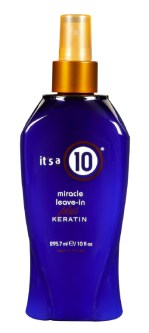There is some confusion amongst home buyers with regards to the terms; mobile home, manufactured homes, class-C manufactured homes (or class-C homes,) and modular homes. So, let’s take a brief moment to look at each of these homes and hopefully bring you some clarity.
 A mobile home, manufactured home, and a Class-C home all start out the same way. They are built in a factory on a metal structured frame. The distinction between a mobile home and a manufactured home is only in the year in which it was built. Any built prior to June 15, 1976 is referred to as a mobile home, and those built after that date are referred to as manufactured homes. The exact same model home could be built on the same assembly line, but the one built on June 15, 1976 would be called a mobile home, and the one built on June 16, 1976 would be
A mobile home, manufactured home, and a Class-C home all start out the same way. They are built in a factory on a metal structured frame. The distinction between a mobile home and a manufactured home is only in the year in which it was built. Any built prior to June 15, 1976 is referred to as a mobile home, and those built after that date are referred to as manufactured homes. The exact same model home could be built on the same assembly line, but the one built on June 15, 1976 would be called a mobile home, and the one built on June 16, 1976 would be referred to as a manufactured home. Mobile homes and manufactured homes are both regulated by the Housing and Urban Development (HUD) division of the federal government. With a mobile home or a manufactured home, each is delivered with an identifying tag, not unlike your automobile. If the home happens to be a double-wide home, then there are two tags; one for each half. A mobile home and a manufactured home are considered personal property, just as your automobile is and a DMV title is provided showing ownership.
referred to as a manufactured home. Mobile homes and manufactured homes are both regulated by the Housing and Urban Development (HUD) division of the federal government. With a mobile home or a manufactured home, each is delivered with an identifying tag, not unlike your automobile. If the home happens to be a double-wide home, then there are two tags; one for each half. A mobile home and a manufactured home are considered personal property, just as your automobile is and a DMV title is provided showing ownership.
 Now, there is a special classification, referred to as a class-C home. A class-C manufactured home is one in which the DMV title has been surrendered, the wheels and tongue have been removed, and the home has been permanently fixed to a foundation, just as if it had been built on the spot. Once a manufactured home has the designation of being a class-C home, it is then considered real property and not personal property. If you are considering a class-C home, always be sure the owner has followed through with surrendering the DMV title. It may be on a permanent foundation, but if they did not surrender the title, the county will still considered it to be a manufactured home.
Now, there is a special classification, referred to as a class-C home. A class-C manufactured home is one in which the DMV title has been surrendered, the wheels and tongue have been removed, and the home has been permanently fixed to a foundation, just as if it had been built on the spot. Once a manufactured home has the designation of being a class-C home, it is then considered real property and not personal property. If you are considering a class-C home, always be sure the owner has followed through with surrendering the DMV title. It may be on a permanent foundation, but if they did not surrender the title, the county will still considered it to be a manufactured home.
 The real confusion lies with a modular home. Many people confuse a manufactured home (and class-C homes) with a modular home. They equate the two as being the same, and they are not. A modular home is a stick built home, but built in a factory in modules, or sections. Modular homes must conform to International Residential Codes (IRC) standards the same as if a bundle of wood was delivered to a building site and erected. A modular home is delivered by truck, the modules put together, and set on its permanent foundation. The roof trusts are then installed. Modular homes are considered real property as soon as it is affixed to the foundation. In many ways, a quality built modular home can be better than an on-site stick built home since the construction process is all under roof with temperature controlled environments. Costs can be held down since all materials are available at the factory, and labor cost are held down as well.
The real confusion lies with a modular home. Many people confuse a manufactured home (and class-C homes) with a modular home. They equate the two as being the same, and they are not. A modular home is a stick built home, but built in a factory in modules, or sections. Modular homes must conform to International Residential Codes (IRC) standards the same as if a bundle of wood was delivered to a building site and erected. A modular home is delivered by truck, the modules put together, and set on its permanent foundation. The roof trusts are then installed. Modular homes are considered real property as soon as it is affixed to the foundation. In many ways, a quality built modular home can be better than an on-site stick built home since the construction process is all under roof with temperature controlled environments. Costs can be held down since all materials are available at the factory, and labor cost are held down as well.
So, hopefully you have a little clarity between mobile homes, manufactured homes, class-C homes, and modular homes.
Thomas Schoenbeck, Keller Williams Realty, Lewes DE (302)360-0300
Read Full Post »
 It is believed this dignified shingled home (now used as a local shop) on Second and Mulberry Streets in Lewes is the oldest in Delaware. Built by early Dutch settlers (after the destruction of the ill-fated Zwaanendael colony,) it has been dated to 1665 through wood boring analysis taken from beams used in the structure. This residence is known to have been standing on its present site in l685. At one time, this home was a colonial inn, and this is the house to which Ryves Holt came in 1721 (and subsequently purchased in 1723) when he arrived at Port Lewes. Holt (1696-1763) became the Naval Officer of the Port and was at one time the Sussex County High Sheriff. Along with other appointments and offices, Holt was made the first Chief Justice of the Supreme Court in The Three Lower Counties on the Delaware River in 1745 and served in this capacity until his death. After Ryves death, Commodore Jacob Jones lived in the house. Following the death of his mother, his father married a daughter of Ryves Holt. Commodore Jones won acclaim when his ship WASP captured the more heavily armed British warship Frolic during the war of 1812.
It is believed this dignified shingled home (now used as a local shop) on Second and Mulberry Streets in Lewes is the oldest in Delaware. Built by early Dutch settlers (after the destruction of the ill-fated Zwaanendael colony,) it has been dated to 1665 through wood boring analysis taken from beams used in the structure. This residence is known to have been standing on its present site in l685. At one time, this home was a colonial inn, and this is the house to which Ryves Holt came in 1721 (and subsequently purchased in 1723) when he arrived at Port Lewes. Holt (1696-1763) became the Naval Officer of the Port and was at one time the Sussex County High Sheriff. Along with other appointments and offices, Holt was made the first Chief Justice of the Supreme Court in The Three Lower Counties on the Delaware River in 1745 and served in this capacity until his death. After Ryves death, Commodore Jacob Jones lived in the house. Following the death of his mother, his father married a daughter of Ryves Holt. Commodore Jones won acclaim when his ship WASP captured the more heavily armed British warship Frolic during the war of 1812. Tired of waking up with matted and tangled hair? Do you end up with more hair in your brush or bathroom sink than on your head? There really is a simple solution to decrease those nasty little hair knots and dryness that leave your perfectly coiffed hair less than admirable.
Tired of waking up with matted and tangled hair? Do you end up with more hair in your brush or bathroom sink than on your head? There really is a simple solution to decrease those nasty little hair knots and dryness that leave your perfectly coiffed hair less than admirable. morning as more and more of your hair ends up in the sink. You may think it’s just the natural aging process, and of course some of it is, but there’s a way to slow down the hair loss problem.
morning as more and more of your hair ends up in the sink. You may think it’s just the natural aging process, and of course some of it is, but there’s a way to slow down the hair loss problem.
 shower each day. We tend to wash and condition our hair, then dry. Best to stay away from heat drying when possible. When we rinse out after showering, we also rinse out the conditioner, leaving our hair unprotected and often times looking dry and lifeless. Spritz a bit of leave-in conditioner after showering and maybe even a bit at night before turning in.
shower each day. We tend to wash and condition our hair, then dry. Best to stay away from heat drying when possible. When we rinse out after showering, we also rinse out the conditioner, leaving our hair unprotected and often times looking dry and lifeless. Spritz a bit of leave-in conditioner after showering and maybe even a bit at night before turning in. English claimed land in 1700 by George Pierce, and ultimately acquired by Pierre duPont in 1906,
English claimed land in 1700 by George Pierce, and ultimately acquired by Pierre duPont in 1906,  Each year and with each season, Longwood Gardens continues to delight visitors of all ages and from all over the world. With a nearly $50,000,000 annual budget, 1300 employees, students, and volunteers, Longwood is a special treat to those that visit and work there.
Each year and with each season, Longwood Gardens continues to delight visitors of all ages and from all over the world. With a nearly $50,000,000 annual budget, 1300 employees, students, and volunteers, Longwood is a special treat to those that visit and work there. as a destination garden spot to ensure continued enjoyment for generations to come. This holiday season, Longwood again celebrated in it’s usual fashion with lights, sites, and sounds. If you are a horticultural enthusiast or just love a grand garden, then Longwood Gardens should be your go-to place.
as a destination garden spot to ensure continued enjoyment for generations to come. This holiday season, Longwood again celebrated in it’s usual fashion with lights, sites, and sounds. If you are a horticultural enthusiast or just love a grand garden, then Longwood Gardens should be your go-to place. A mobile home, manufactured home, and a Class-C home all start out the same way. They are built in a factory on a metal structured frame. The distinction between a mobile home and a manufactured home is only in the year in which it was built. Any built prior to June 15, 1976 is referred to as a mobile home, and those built after that date are referred to as manufactured homes. The exact same model home could be built on the same assembly line, but the one built on June 15, 1976 would be called a mobile home, and the one built on June 16, 1976 would be
A mobile home, manufactured home, and a Class-C home all start out the same way. They are built in a factory on a metal structured frame. The distinction between a mobile home and a manufactured home is only in the year in which it was built. Any built prior to June 15, 1976 is referred to as a mobile home, and those built after that date are referred to as manufactured homes. The exact same model home could be built on the same assembly line, but the one built on June 15, 1976 would be called a mobile home, and the one built on June 16, 1976 would be referred to as a manufactured home. Mobile homes and manufactured homes are both regulated by the Housing and Urban Development (HUD) division of the federal government. With a mobile home or a manufactured home, each is delivered with an identifying tag, not unlike your automobile. If the home happens to be a double-wide home, then there are two tags; one for each half. A mobile home and a manufactured home are considered personal property, just as your automobile is and a DMV title is provided showing ownership.
referred to as a manufactured home. Mobile homes and manufactured homes are both regulated by the Housing and Urban Development (HUD) division of the federal government. With a mobile home or a manufactured home, each is delivered with an identifying tag, not unlike your automobile. If the home happens to be a double-wide home, then there are two tags; one for each half. A mobile home and a manufactured home are considered personal property, just as your automobile is and a DMV title is provided showing ownership. Now, there is a special classification, referred to as a class-C home. A class-C manufactured home is one in which the DMV title has been surrendered, the wheels and tongue have been removed, and the home has been permanently fixed to a foundation, just as if it had been built on the spot. Once a manufactured home has the designation of being a class-C home, it is then considered real property and not personal property. If you are considering a class-C home, always be sure the owner has followed through with surrendering the DMV title. It may be on a permanent foundation, but if they did not surrender the title, the county will still considered it to be a manufactured home.
Now, there is a special classification, referred to as a class-C home. A class-C manufactured home is one in which the DMV title has been surrendered, the wheels and tongue have been removed, and the home has been permanently fixed to a foundation, just as if it had been built on the spot. Once a manufactured home has the designation of being a class-C home, it is then considered real property and not personal property. If you are considering a class-C home, always be sure the owner has followed through with surrendering the DMV title. It may be on a permanent foundation, but if they did not surrender the title, the county will still considered it to be a manufactured home. The real confusion lies with a modular home. Many people confuse a manufactured home (and class-C homes) with a modular home. They equate the two as being the same, and they are not. A modular home is a stick built home, but built in a factory in modules, or sections. Modular homes must conform to International Residential Codes (IRC) standards the same as if a bundle of wood was delivered to a building site and erected. A modular home is delivered by truck, the modules put together, and set on its permanent foundation. The roof trusts are then installed. Modular homes are considered real property as soon as it is affixed to the foundation. In many ways, a quality built modular home can be better than an on-site stick built home since the construction process is all under roof with temperature controlled environments. Costs can be held down since all materials are available at the factory, and labor cost are held down as well.
The real confusion lies with a modular home. Many people confuse a manufactured home (and class-C homes) with a modular home. They equate the two as being the same, and they are not. A modular home is a stick built home, but built in a factory in modules, or sections. Modular homes must conform to International Residential Codes (IRC) standards the same as if a bundle of wood was delivered to a building site and erected. A modular home is delivered by truck, the modules put together, and set on its permanent foundation. The roof trusts are then installed. Modular homes are considered real property as soon as it is affixed to the foundation. In many ways, a quality built modular home can be better than an on-site stick built home since the construction process is all under roof with temperature controlled environments. Costs can be held down since all materials are available at the factory, and labor cost are held down as well. When selling a home, most sellers want to know, how fast will it sell? While there’s no certain way to know for sure, but there is a way to determine what market data indicates when it should sell. This market data is referred to as absorption rate. Always ask your Realtor what the absorption rate is for your neighborhood. (This can be a good clue to you if your Realtor® really has their finger on the pulse of your market.)
When selling a home, most sellers want to know, how fast will it sell? While there’s no certain way to know for sure, but there is a way to determine what market data indicates when it should sell. This market data is referred to as absorption rate. Always ask your Realtor what the absorption rate is for your neighborhood. (This can be a good clue to you if your Realtor® really has their finger on the pulse of your market.) neighborhood. Let’s say there are 10 homes on the market right now. Then select a time reference; let’s say 12 months. Take the number of homes sold in the past 12 months and divide by 12. That’ll give you the average number of homes that sell in a 30-day period. Take that 30-day average and divide by the number of active homes on the market. That result is the absorption rate.
neighborhood. Let’s say there are 10 homes on the market right now. Then select a time reference; let’s say 12 months. Take the number of homes sold in the past 12 months and divide by 12. That’ll give you the average number of homes that sell in a 30-day period. Take that 30-day average and divide by the number of active homes on the market. That result is the absorption rate. So, for our example of there being 10 homes for sale in your neighborhood, and let’s say there were 24 homes that sold in the past 12 months, then following our equation; 24÷12= 2 homes sold every month (as an average.) Now, take the 10 homes on the market and divide by 2. Your answer is 5, so in this case it should take 5 months to sell your home. And the rate is 20%, meaning 20% of the homes will sell every month.
So, for our example of there being 10 homes for sale in your neighborhood, and let’s say there were 24 homes that sold in the past 12 months, then following our equation; 24÷12= 2 homes sold every month (as an average.) Now, take the 10 homes on the market and divide by 2. Your answer is 5, so in this case it should take 5 months to sell your home. And the rate is 20%, meaning 20% of the homes will sell every month.



